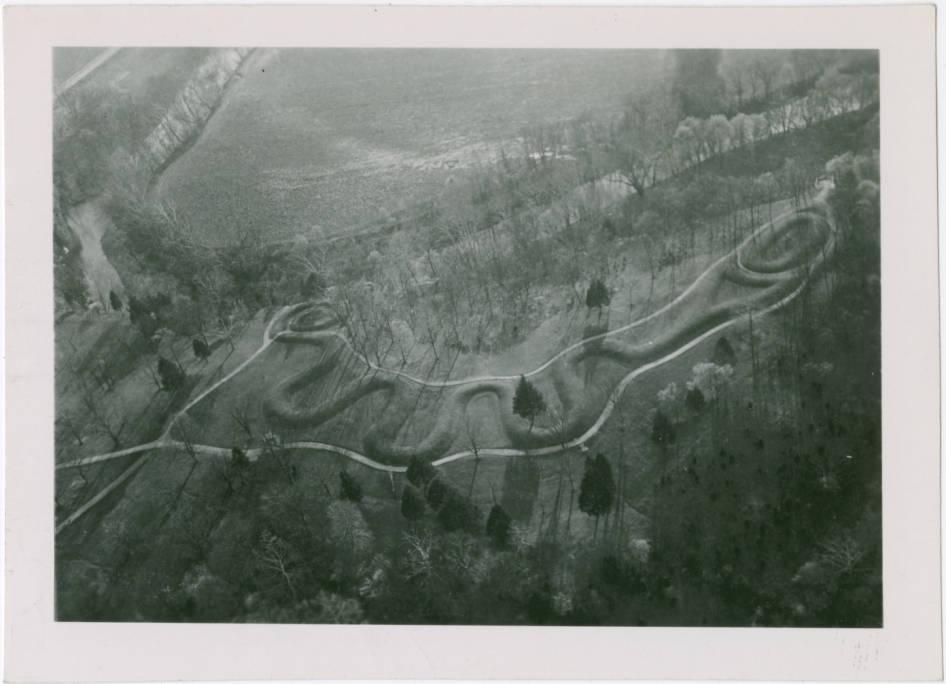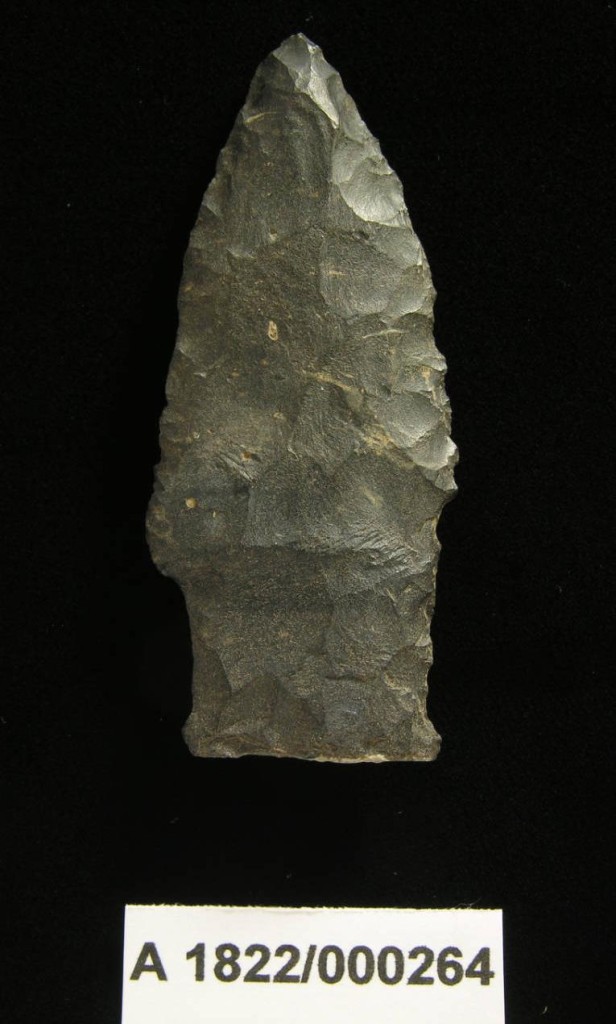Adams… and Adams

Adams County, Ohio, was established by Arthur St. Clair 217 years ago this month, on July 10, 1797, and was named for our country’s second President, John Adams. It was one of the first four counties established in the Northwest Territory and is the location of Serpent Mound (seen above), an Indian earthwork and Ohio History Connection site.

Ohio Memory features a large number of items and artifacts related to Adams County history, many of which relate to Serpent Mound, the largest snake effigy in the world. These include pottery shards, pipes and tools. Initially thought to have been built by the Adena culture, carbon dating suggests that it may have been created by a later culture, Fort Ancient, around 1070. Many photographs and sketches of the Serpent Mound can also be viewed in Ohio Memory, although there’s still plenty of time this summer to visit this noted site yourself! You can also find images from various sites in Adams County, its cities and towns, and Zane’s Trace.
Exactly a year after Adams County was named to honor John Adams, he was passing the fourth of an extremely controversial set of acts, the Alien and Sedition Acts. These included requirements for citizenship, limited immigration, and made some types of criticism of government illegal. The laws reflected a fear of war and of foreigners that was coupled with a desire to suppress free expression and dissent. This fear may well have had a basis in reality: some Democratic-Republicans, supporters of the French Revolution, wished for a similar revolution to occur in America. Adams, a Federalist, responded to this perceived threat with laws that were strongly opposed by many from their outset and which, ultimately, cost Adams a second term in office. Adams’ term was followed by Thomas Jefferson, a Democratic Republican, who served two terms as President.

In Ohio Memory, researchers may find a scathing account of Adams’ single term entitled The History of the Administration of John Adams, Esq., Late President of the United States, by John Wood, a Democratic-Republican. Wood makes his loyalties crystal clear, denouncing Adams’ entire four years as President and using each of the books 506 pages to do so. Publication of this title was initially suppressed; Wood sought to publish in 1800, as Adams was concluding his term, but Aaron Burr, also a Federalist and supporter of Adams, postponed its publication by calling it “incorrect” and “libelous.” Burr and his associates purchased the first edition, but the title was still released a year later with a different publisher; incidentally, the book was re-released in 1846 with an introduction that describes the first edition’s suppression. Upon reading the book, one can understand why Adams’ supporters were dismayed by the first edition, as this edition portrays Adams in an extremely unflattering light. Readers will also likely wonder what, if anything, the people of Adams County may have thought when the man whom they had honored became such a controversial figure.
From Adams, the county, to Adams, the man, to other topics both wide-ranging and closely related, researchers can find a remarkable number of resources in Ohio Memory!
_______________________________________________________________________________
Thank you to Shannon Kupfer, Digital/Tangible Media Cataloger at the State Library of Ohio, for this week’s post!



Leave a Reply
You must be logged in to post a comment.